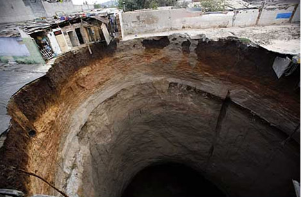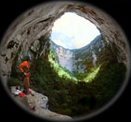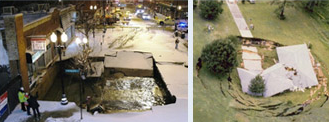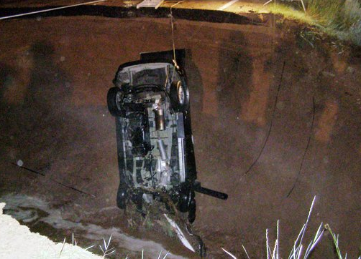What Is A Sinkhole
|
||
Sinkholes are one of the world's scariest natural phenomena. They are natural depressions, or holes, on the Earth's surface extending to varying depths and diameters of as much as 2,000 feet. A sinkhole, also known a sink, swallet, shake hole, swallow hole, doline, or cenote, may be formed gradually or suddenly by natural processes or through human activity and intervention. Sinkholes are common where the rock below land surface is limestone or other carbonate rocks. These rocks can easily be dissolved by water circulating underground. Sinkholes due to this cause can occur suddenly since the land surface usually stays intact until there is no longer enough support underground. Sinkholes may also form due to human activity, such as the collapse of abandoned mine sites. Urban sinkholes occur when old water main breaks or sewer pipes give way causing erosion of subterranean soil. Displacing or over-pumping and extraction of ground water can also be a cause. The development of new water diversion systems to replace natural water drainage routes can also be a reason. Urban sinkholes, up to hundreds of feet deep have formed and consumed parts of city blocks, sidewalks and even entire buildings.
 sinkhole #1 |
 sinkhole #2  sinkhole #3  sinkhole #4 & 5  Just last July 14, heavy rains caused the collapse of State Road 35 in Tabiona, Utah resulting in a huge sinkhole 40 ft wide and 30 ft deep. Above photo shows one of the 2 vehicles that plunged into the sinkhole. A teenage girl died in this incident. >> back to Home
|
|